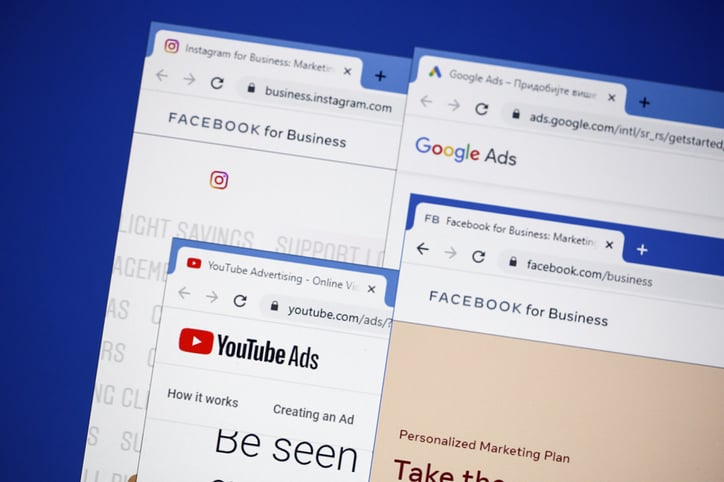
Gal Zohar
Vice President, Solutions Development @ Skai

Gal Zohar
Vice President, Solutions Development @ Skai

Over the last 25 years of digital advertising, brands and agencies sometimes consider what it would take to build their own ad tech versus buy it from a vendor.
At Skai, we have seen many large advertisers think through the buy vs build advertising tech discussion — after all, there are positives and negatives to each approach.
While most decide to go the buy route, some do decide to build their own ad tech for managing their digital marketing campaigns. Of those, many have reversed course and returned to us after a few years.
An ad tech stack, also known as advertising technology stack, is used to describe the devices and software advertisers can utilize in order to reach audiences and measure digital advertising campaigns. Ad tech can also help companies make the most out of their campaign budgets on one platform and maximize ROI.
Saving money. One of the most popular reasons why advertisers even start down this path is that the upfront cost to build their own ad tech often seems way lower than paying the ongoing fees of a tech platform.
After all, serving a wide variety of advertisers in different channels and industries generally means a large feature set that not every customer needs. The idea is that an individual advertiser could build lighter-weight technology that just covers its needs. Those recouped dollars can then be reinvested back into working media which holds the potential to generate more conversions and sales.
A custom tool. Another pro that might get an advertiser to build their own ad tech would be to address the exact use cases of that business. They can create a tool that fits the workflow and style of their marketing team which can speed up management time. Time is a resource just like money, so time savings can also then be reinvested into the operation to drive additional value.
Control over priorities. Finally, one of the main values advertisers hope for when they build their own tech is that they have full control over the roadmap. Ad tech vendors generally prioritize the features they think align with most clients’ future strategies. So, if your most desired new feature doesn’t have a wide appeal, you may have to wait on it for a bit while the more popular functionality is built.
This especially applies when publishers make new capabilities available in their APIs that may, once again, be nice enhancements for your business, but get deprioritized by your vendor because it’s too niche.

So, if building their own ad tech made sense for advertisers, why don’t more do it? And why do we often see clients return after trying it themselves?
Well, there are quite a few disadvantages to building your own platform. Most of them seem small in the first few months but grow exponentially over time.
Not as much cost savings as you may think — often quite the opposite. If cost savings was the original motivation for building proprietary ad tech, the reality sets in quickly that the ongoing cost of maintenance is much more expensive than the original development efforts. Remember, each and every capability you develop will need to be maintained forever. The cost of this, in time and in money only goes up.
Remember, ad tech vendors spread out the costs across their client base in order to cover these expenses.
Shifting priorities. It is also common for an organization to have focus and executive attention at a given point in time and say “we should invest in this”. But, of course, that focus eventually changes to something else. So, what advertisers are left with is a proprietary tool that made sense last year, but doesn’t fit the new needs of the marketing organization this year.
Keeping up with major changes. While publishers are constantly enhancing their APIs, most upgrades are quite seamless. However, every few years, publishers make significant evolutions to their offerings. When that happens, any API partner needs to invest massive resources just to keep everything working. If you build your own tech to several publisher APIs, some major migration efforts would be required each and every year.
Just the basics can be overwhelming. After cost savings, one of the biggest reasons advertisers venture into tech development is for a key use case that existing vendors don’t have. But it is easy to forget or downplay the importance and the cost of all the other capabilities. For example, automated ad creation might be amazing when building your own, but notifications, alerts, reporting, or analysis of performance, are not easy tasks and can become a black hole of time and money.
The visionary moves on. Generally, there’s one key stakeholder that is pushing the build initiative. He/she is convinced that the proprietary tech is absolutely imperative and spearheads the project. But, what happens when that person takes on a different role or leaves the company? The marketing organization is left with a bulky, expensive piece of technology without a passionate owner.
In these situations, we’ve seen the team that remains try to keep up the momentum, but eventually, the juice doesn’t seem worth the squeeze and they scrap the proprietary tech for a trusted vendor.
Publisher expansion. Advertisers today must meet their consumers across more and more publishers. Supporting a new publisher is a very expensive undertaking. Is that emerging publisher even going to become a significant part of your future strategy? If you wait until you are sure, you might be too far behind your competitors as they build market share while you’re building your tech. If you build too early, you may realize later that the integration and investment in time, money and organizational distraction weren’t necessary.
Combined with the aforementioned maintenance cost per publisher, the ongoing need to integrate with new publishers is an exponentially-increasing cost that is hard to mitigate for a single advertiser without a big user base to spread around the cost.
Even given the challenges, some companies decide to build their own ad tech. However, from our experience, very few are successful. Moreover, due to the sunk cost fallacy, it often takes several (expensive) years for companies to admit their home-grown tech is not cutting it and needs to be replaced.
The sunk cost fallacy is “a vicious cycle because we continue to invest money, time, and effort into endeavors that we have already invested in. The more we invest, the more we feel committed to continuing the endeavor, and the more resources we are likely to put in to follow through on our decision.”
While there are certainly some enticing perks, the realities of managing these programs are often much more complex than advertisers realize until they are halfway through.
If you are considering this path, our suggestion is to find someone who has tried this before and see what they say.
You are currently viewing a placeholder content from Instagram. To access the actual content, click the button below. Please note that doing so will share data with third-party providers.
More InformationYou are currently viewing a placeholder content from Wistia. To access the actual content, click the button below. Please note that doing so will share data with third-party providers.
More InformationYou are currently viewing a placeholder content from X. To access the actual content, click the button below. Please note that doing so will share data with third-party providers.
More Information